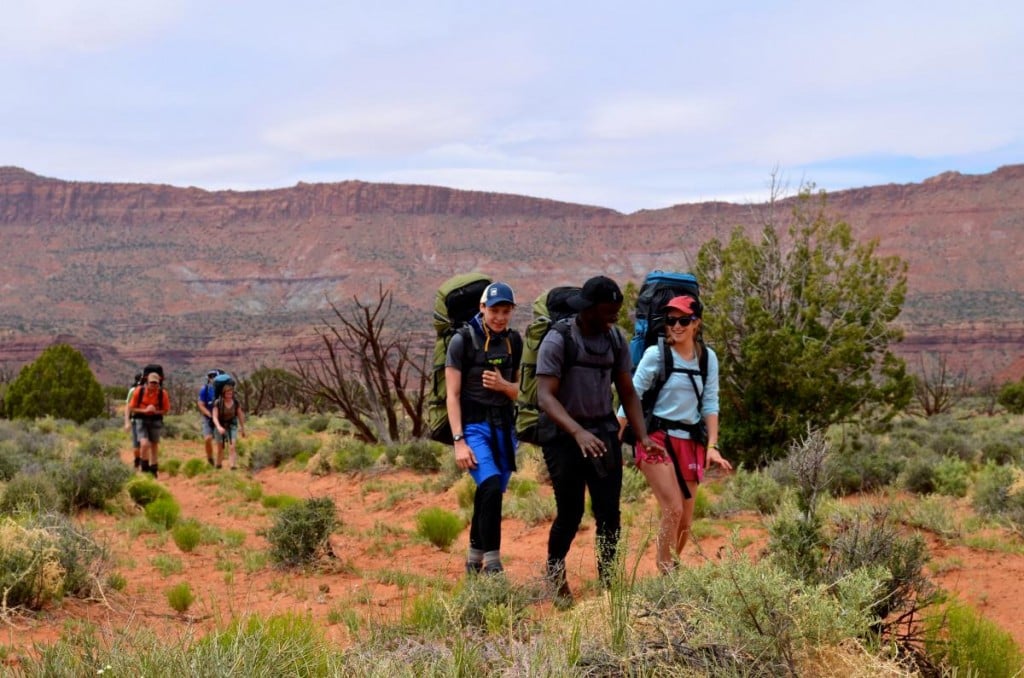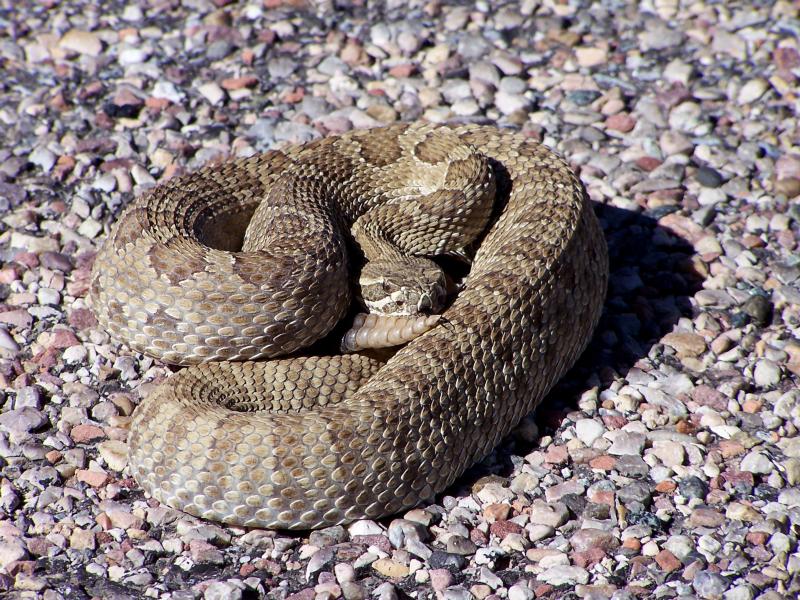
When the weather warms up, that means the reptiles are out of their winter dens and ready to enjoy some sunshine—just like you, your friends, dogs, and everyone in between.
Since we're sharing the outdoors with these reptiles, it's a good time to know what to watch for to prevent snakebites. As always with wilderness medicine, prevention is key. Be mindful of where you are walking, and if you're in known snake habitat, consider keeping your pet close by or on a leash.
Which Snakes Should I Look Out For?
In North America, snake envenomations (where the snake bites and injects venom), are generally caused by Crotalids, the family of snakes that includes pit vipers like rattlesnakes, water moccasins, and copperheads. Less common, but still found in the U.S., are Elapids, the family that includes coral snakes.
Although there are about 8,000 venomous snakebites in the United States each year, there are usually only around 5-6 fatalities (according to the University of Florida Department of Ecology and Conservation). That means you're nine times more likely to die from a lightning strike than a snakebite. In fact, nearly a quarter of bites delivered by pit vipers and half of those delivered by coral snakes don't deliver any venom at all. So, while you certainly need to take care to prevent snakebites, you also don't need to panic every time you hit the trail.
With that in mind, let's look at how to prevent snakebites in the first place, the signs and symptoms of various bites, and what to do if a snake bite does occur.
PREVENTION
- Plan ahead and prepare. Know if you are traveling in snake country. Research local snakes prior to travel for prevention advice, local treatment protocols, and the availability of antivenom.
- Respect wildlife. Don't pick up or corner a snake.
- Avoid blind placement of hands and feet in suspect areas.
- Avoid traveling at night without a light.
Signs and Symptoms
Pit Viper Bites (Rattlesnakes, Water Moccasins, Copperheads)
- Fang marks
- Swelling and pain. If absent after 30 minutes, envenomation probably did not occur.
- Ecchymosis (skin discoloration resulting from bruising) and bleb formation (a pressure cyst) over 6-36 hours, and later necrosis (death of body tissue)
- Weakness, sweating, and chills
- Nausea and perhaps vomiting
- Numbness and swollen lymph nodes

Coral Snake Bites
- Local swelling
- Nausea, vomiting
- Dizziness, weakness, respiratory difficulty (up to 12 hours after bite)
Treatment Principles
These Apply for All Snake Bites
- Scene Safety! Don't create another victim by attempting to identify, capture, or kill a snake.
- Keep yourself and the patient calm.
- Immobilize the limb. Avoid compression/constriction of the bitten extremity. Remove constricting clothing and jewelry.
- Transport to a physician/hospital. The definitive treatment for envenomation is antivenom and supportive care.
- Document the signs and symptoms of envenomation in order to describe the progression to a physician.
These Vary by Region
- Wash the wound. This is recommended in North America to prevent local wound infection. In Australia, this is not done, as it prevents surface assay (a technique that involves wiping the wound and using a machine to identify the venom on the wipe and determine the species of snake. Very specific antivenoms exist for their various dangerous snake species). In India, washing is not recommended because of concern that scrubbing the wound could increase venom distribution.
- Consider pain medications. Avoid aspirin due to anticoagulation concerns.
- Apply a pressure immobilization bandage: a wide elastic bandage wrapped about as tight as an ankle wrap, distal to proximal (from the limb towards the torso). This is recommended for North American coral snake bites and other Australian Elapid species. In India, this type of bandage is not recommended.
DO NOT use unproven or discredited treatments that may harm the patient, such as:
- Tourniquets or other constricting bandages
- Ice
- Electricity
- Meat tenderizer
- Incision and suction
Check out our Mythcrushers video on North American snakebites:
Evacuation Guidelines
- Evacuate all patients bitten by a snake.
- Rapidly evacuate patients with signs or symptoms of envenomation.
Written By
Tod Schimelpfenig
As a NOLS Instructor since 1973 and a WEMT, volunteer EMT on ambulance and search and rescue squads since the 70s, Tod Schimelpfenig has extensive experience with wilderness risk management. He has used this valuable experience to conduct safety reviews as well as serve as the NOLS Risk Management Director for eight years, the NOLS Rocky Mountain Director for six years, and three years on the board of directors of the Wilderness Medical Society, where he received the WMS Warren Bowman Award for lifetime contribution to the field of wilderness medicine. Tod is the founder of the Wilderness Risk Manager’s Committee, has spoken at numerous conferences on pre-hospital and wilderness medicine, including the Australian National Conference on Risk Management in Outdoor Recreation, and has taught wilderness medicine around the world. He has written numerous articles on educational program, risk management and wilderness medicine topics, and currently reviews articles for the Journal of Wilderness and Environmental Medicine. Additionally, he is the author of NOLS Wilderness Medicine and co-author of Risk Management for Outdoor Leaders, as well as multiple articles regarding wilderness medicine. Tod is the retired curriculum director for NOLS Wilderness Medicine and is an active wilderness medicine instructor



